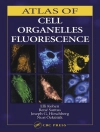This fourth volume in the series Advances in Vision Research describes importance advancements in basics to translational research, including new therapeutics for genetic eye diseases. Recent US FDA approval of the first gene therapy for an inherited retinal disease, due to a mutation in the RPE65 gene, has led to an upsurge in translational eye research. The coverage in this volume includes corneal diseases, myopia, cataract, glaucoma, inherited retinal diseases, inherited optic neuropathy, and other genetic eye diseases. New developments such as the application of artificial intelligence in translational eye research are also discussed. All chapters are written by leading researchers working on eye genetics from the fields of Human Genetics, Ophthalmology, Molecular Biology, Biochemistry, Sensory Sciences, and Clinical Research. Advances in Vision Research, Volume IV will be a major resource for all researchers, clinicians, clinical researchers, andallied eye health professionals with an interest in eye diseases around the globe. The first two volumes in the series described the state of the art in genetic eye research in Asia and the Pacific while the third focused on progress in Europe and the United States.
Jadual kandungan
Part I Gene therapy for ocular genetic diseases.- Chapter 1 Gene therapy for neovascular age-related macular degeneration.- Chapter 2 Gene therapy trial on X-linked retinitis pigmentosa caused by mutations in RPGR.- Chapter 3 Optogenetic approaches to restore vision.- Chapter 4 Retinal AAV8-RS1 Gene Therapy for X-Linked Retinoschisis.- Chapter 5 Subretinal versus Intravitreal Delivery of AAV8 in Nonhuman Primates.- Chapter 6 Gene therapy for Leber Congenital Amaurosis caused by mutation in RPE65.- Chapter 7 Release of r AAV Vectors from APMA-Functionalized Contact Lenses for Corneal Gene Therapy.- Chapter 8 Gene Therapy to Prevent Retinal Ganglion Cell Loss in Glaucoma and Leber’s Hereditary Optic Neuropathy.- Part II Gene editing as therapy for ocular disease.- Chapter 9 Gene Therapy for Glaucoma by Ciliary Body Aquaporin 1 Disruption Using CRISPR-Cas9.- Chapter 10 Somatic Gene Editing of GUCY2D by AAV-CRISPR/Cas9 in Mouse and Macaque.- Chapter 11 In Vivo CRISPR/Cas9-Mediated Genome Editing Mitigates Photoreceptor Degeneration in Mouse Model of X-Linked Retinitis Pigmentosa.- Chapter 12 Gene Expression and Editing in Mammalian Retinal Ganglion Cells.- Chapter 13 AAV-mediated mutation replacement genome editing in photoreceptors restores vision in mice.- Chapter 14 Gene Editing Preserves Visual Functions in a Mouse Model of Retinal Degeneration.- Chapter 15 Genome Editing as Treatment for Autosomal Dominant Retinitis Pigmentosa.- Chapter 16 CRISPR/Cas base editors to target the AMD high-risk variant.- Part III Cell therapy for ocular genetic diseases.- Chapter 17 Transplantation of Human Embryonic Stem Cell-Derived Retinal Pigment Epithelial Cells in Macular Degeneration.- Chapter 18 Transplantation Retinal Sheet Differentiated from Patient i PS Cells with Inherited Retinitis Pigmentosa.- Chapter 19 Clinical study of an ES cell-derived retinal pigment epithelium patch in age-related macular degeneration.- Chapter 20 Long-term safety of human retinal progenitor cell transplantation in retinitis pigmentosa patients.- Chapter 21 Preclinical safety studies of human embryonic stem cell-derived retinal pigment epithelial cells for the treatment of age-related macular degeneration.- Chapter 22 Corneal endothelial cell derivation methods from ES and i PS cells.- Chapter 23 Gene editing approach to restore vision loss in Leber Congenital Amaurosis type 10.- Chapter 24 Inhibition of Optineurin – TANK Binding Kinase 1 interaction to suppress inherited normal tension glaucoma.- Chapter 25 A 3D Printed Self-Sustainable Cell-Encapsulation Drug Delivery Device for Periocular Transplant-Based Treatment of Retinal Degenerative Diseases.- Chapter 26 Complement inhibition as therapy for retinal diseases.- Chapter 27 Neuroprotective Therapy for Retinal Ganglion Cell Degeneration.- Chapter 28 Artificial intelligence in retina.- Chapter 29 Prediction of AI for Treatment Potential for Macular Cone Vision in Leber Congenital Amaurosis.- Chapter 30 Artificial Intelligence for Evaluation of Macular Degeneration and Suspected Glaucoma.- Chapter 31 Artificial Intelligence Classification of Central Visual Field Patterns in Glaucoma.- Chapter 32 Artificial intelligence and deep learning in ophthalmology.
Mengenai Pengarang
Dr. Gyan Prakash is Director of Office of International Program Activities at National Eye Institute (NEI)- National Institutes of Health (NIH), USA. He served as the first Director of Transformational Medical Technologies Initiative (TMTI), a pioneer scientific research and product development program in the US Government with a budget of US$ 1.6 Billion. Before joining the U.S. Gov’t, Dr. Prakash served as the Chief Operating Officer and Executive Vice President at AMAR International, a life science program management company in the USA. Previously, he served as the President and CEO of Metastatin Pharmaceuticals. Dr. Prakash earned his international program management experience at Pfizer world headquarters in New York in several leadership roles. He has a Ph D in Biomedical Sciences earned at University of Illinois at Urbana-Champaign and MBA in Management and fellowships at UCLA School of Medicine and Centers for Disease Control. He is the founding President of Global Eye Genetics Consortium (GEGC), previously Asian Eye Genetics Consortium (AEGC).
Dr. Takeshi Iwata is Director of Molecular and Cellular Biology Division at National Institute of Sensory Organs (NISO), National Hospital Organization Tokyo Medical Center (NHOTMC) in Tokyo, Japan. He is known for his pioneering work in the field of retinal genetics and worked on inherited retinal diseases, inherited optic neuropathy and inherited glaucoma. He did his postdoctoral fellowship at National Eye Institute (NEI), National Institutes of Health (NIH) in Bethesda, Maryland and at Bascom Palmer Eye Institute, University of Miami School of Medicine in Miami, Florida. He continued his work as Director at NISO/NHOTMC. Dr. Iwata earned his Ph D from Meijo University in Japan. He is currently serving as President of both Japan Eye Genetics Consortium (JEGC) and Global Eye Genetics Consortium (GEGC).












